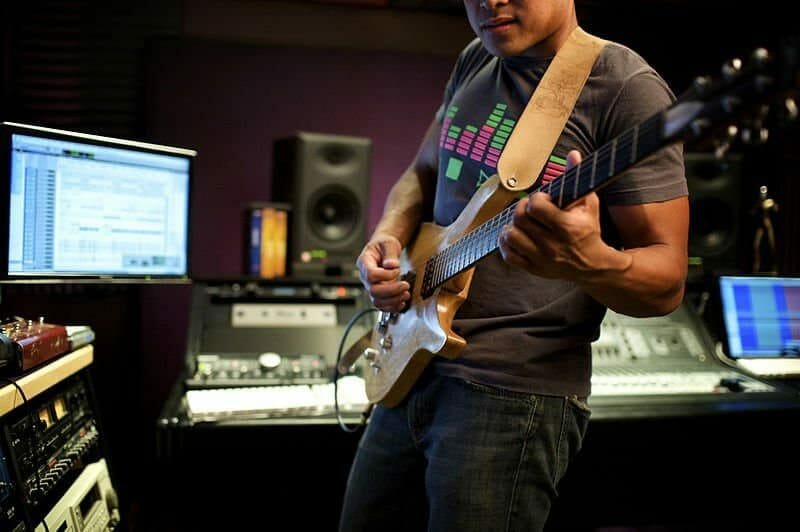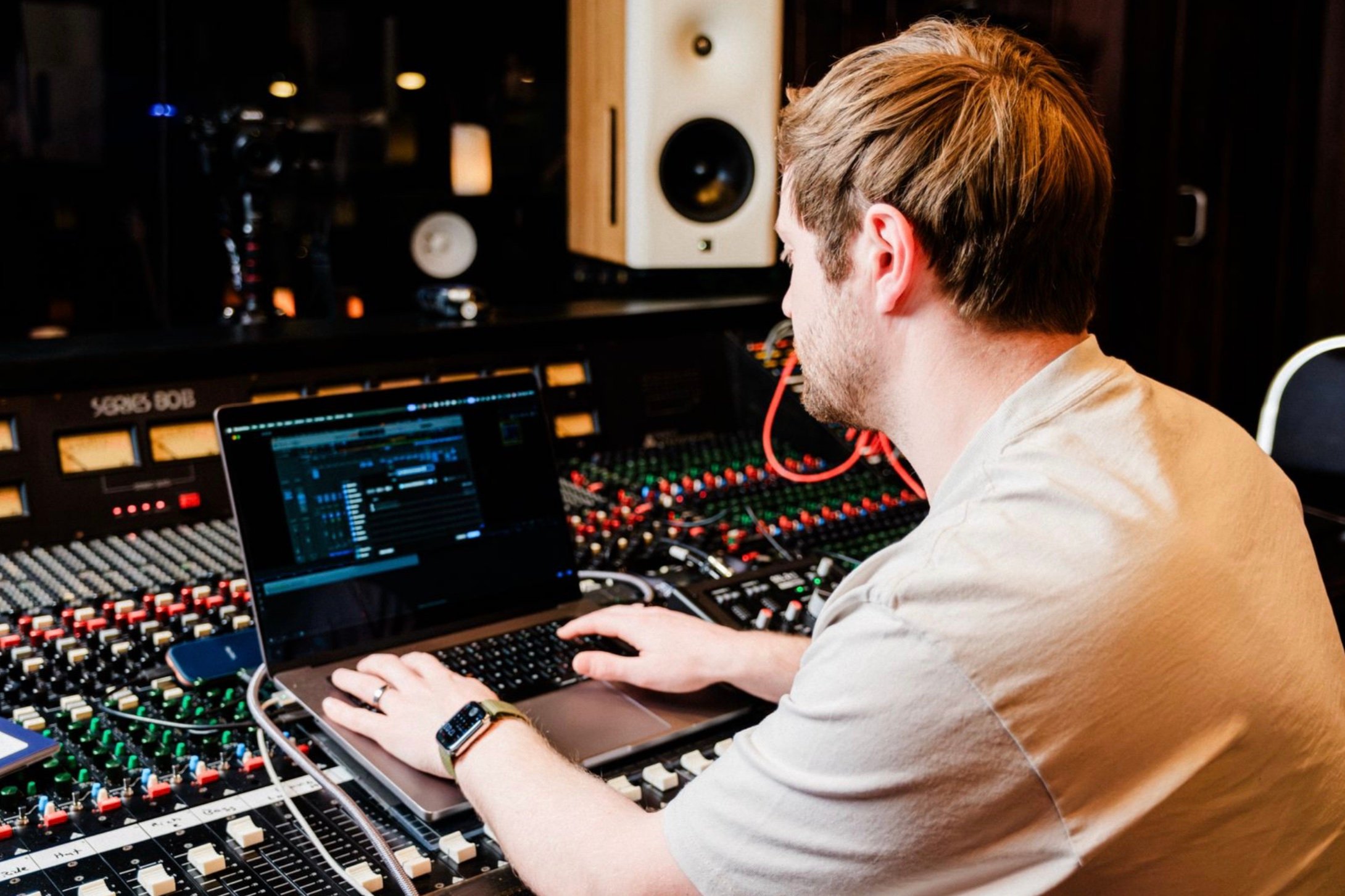“My single biggest challenge is feeling overwhelmed when I sit down to start a new project. Where do I start?”
This question from a reader is one that I see often.
You might be great at writing, recording and mixing…
But if you don’t have a proven workflow that works for you, it’s hard to start and finish a track.
In this article, I’m going to share my best advice for finding your perfect production workflow. I’m also going to share mine.
Once you have a workflow for writing, recording, editing and mixing music, you will be able to produce better music and mixes in less time.
I’m guessing you’re here because you want to make your mixes sound professional. We put together a brief training that covers a totally new approach to music production. Until now, everyone has been teaching production totally backward. Just click below to watch.Get industry-quality every time (steal this framework)
But if you just want to learn about Workflow specifically, keep reading.
Composition Workflow: How to Write Music
Of all the stages of the production process, this is the one where people vary the most.
Everyone has a different way of writing music.
It depends what your strongest instrument is. It depends if you have an inclination towards harmony, melody or rhythm.
As a bassist, I tend to start with the bass and drums and build from there. Also, as I can’t sing, the vocals tend to be recorded last. But it varies.
There are a few common ways of writing that might work for you. Try each approach below. Once you find a workflow that works, stick with it.
Start with the Lyrics and Vocal Melody
This is a great way to work if you want the vocals to be the main focus.
It’s also an easy way to write great melodies that are memorable.
Start with the lyrics, and compose a vocal melody to those words. You could also hum, whistle or scat a melody without any lyrics.
Once you have your main melody finished, find some chords that work well underneath. This usually becomes the chorus, and you can work from there.
Start With Your Strongest Instrument
This seems like the obvious thing to do.
Start with the instrument that you are most comfortable with (even if it’s just vocals).
For me, this is bass guitar. If I am following this approach, I will write the chord progression and main rhythmic theme.
If you are a vocalist, you could start with the melody and lyrics and build from there.
Start With the Title
To write in a more emotional manner, you could start with the title.
But before you come up with the title, you need to decide what you are going to write about. Decide on a topic or past event that means something to you.
Once you have a title and overall feel for the song, you can start writing lyrics, chords and melodies.
Start with the chorus and then compose the verses, bridge etc.
Start With an Influence
This is a great technique for beginners and people with less time.
Start with a song that you would like to use as your main influence. Now pick it apart and observe how the different parts work with each other.
Observe the following things:
- Chordal Structure
- Melody Structure
- Instrumentation
- Tempo
- Rhythm
- Harmony
Once you have an idea of what makes the song sound the way it does, write your own song using the key features.
For example, let’s say I want to use Towers by Bon Iver as my main influence.
I can observe the following things about this song:
- Atmospheric introduction using an EBow on an electric guitar
- Chords with ringing open strings played on a clean electric guitar
- Falsetto vocal with a lot of overdubbed harmonies
- Drums and brass section come in towards the end
I could start by writing a chord pattern on electric guitar with ringing open strings. Then I could write a falsetto vocal part. At this point, inspiration will likely strike and the overall song structure and lyrics will start to come together.
Then, during the recording process I could add vocal overdubs for the harmonies and create an atmospheric introduction.
The end product should be quite different from the original influence, but it gives you a great starting point.
Writing Music in a Band
Writing music as a band is often more complicated. It’s more difficult to recommend a workflow that will work for everyone.
Try applying one of the approaches above. You also have a few more options when it comes to composing music as a band:
- One person writes the entire piece, and the other musicians play the parts
- One person writes the core song (chords and/or lead vocals), everyone else writes their own parts (bass, drums, lead guitar etc)
- Improvise until you come across something that you like
Recording Workflow: Lay the Song Down
Some people record music as part of the writing process, which is perfectly acceptable.
If you write electronic music, this will almost certainly be the case.
Or if you are a solo musician composing a full band piece, you will also have to record the piece as you write it.
Sometimes you might want to start from scratch and record the whole track again once you have finished the first demo. This is up to you.
If you DON’T record as you write, then the recording workflow will be entirely different.
Recording as a Solo Musician
If you have a finished song and are recording from scratch, it’s best to start with the foundations.
It’s also vital to use a click track (metronome) in your DAW when recording.
Start with the drums (electronic or not), then record the bass and build up from there. Record the vocals last.
Recording as a Band
When recording as a band, you first need to decide if you want to record live or separately.
If recording separately, it’s best to start with the drums (and bass at the same time if possible).
Then build from there, starting with chords and ending with melodies and vocals.
Editing Workflow: Fixing Rhythm and Tuning
This is an important section of the production process that many people skip.
Spending sufficient time on editing can be the difference between an amateur and professional sound.
Not all genres are appropriate for editing (jazz, for example). But if you are working with any mainstream style, it’s essential.
Start with the drums. It will be a lot easier if you recorded to a click track. Fix any early/late hits, but don’t forget to align the overheads too.
Now line up the other parts to the drums.
Edit the vocals last. Comp them, tune them if necessary, fix any timing issues and apply clip gain automation.
UPDATE: Learn 3 high-level production tips here:
Mixing Workflow: Don’t Mix Without a System
This is the phase where it is most important to have a workflow.
Too many people waste time and energy aimlessly moving around the mix…
…with no intentions, goals or direction. Don’t let this be you.
Some people like to start with the most important part (for example, the vocal) or the foundation (for example, the kick drum) and work up from there.
Once you have finished mixing one channel, you bring in the next.
I think this is an awful approach to mixing. Instead, I recommend starting with the bigger picture and leaving the finer details (like the tone of a kick drum) to the end of the mix.
I call this process Slow Focus Mixing, and you can learn all about it in the video below.
NOTE: Want to be a producer that ACTUALLY produces? Then watch this:
Conclusion
Having a workflow for every stage of the music production process is vital.
Without a workflow, you will feel overwhelmed. You will waste time deciding what to do next.
Try the approaches that I have outlined in this article – but in the end it’s all down to you and how you like to work.
Over time you will develop your own preferred workflow. But for now, it’s better to have something than nothing.
Image courtesy of Wikimedia
Do you have a workflow that isn’t mentioned in this article? Or perhaps you don’t have a workflow at all, and like it that way?
Leave a comment below.
If you want to dig deeper into music production and learn what it actually takes to make mixes that sound pro… And you’re an intermediate or advanced producer… Be sure to check out the free masterclass: Enjoy!Next Steps













